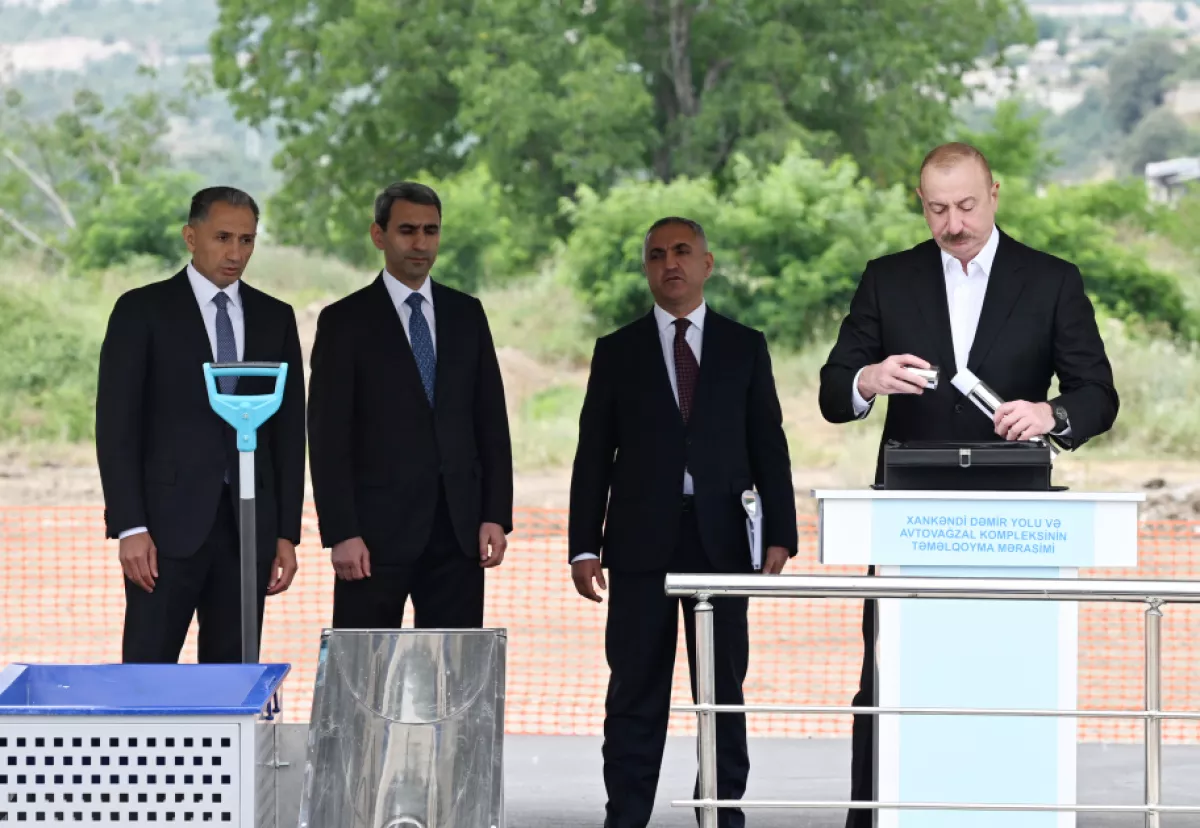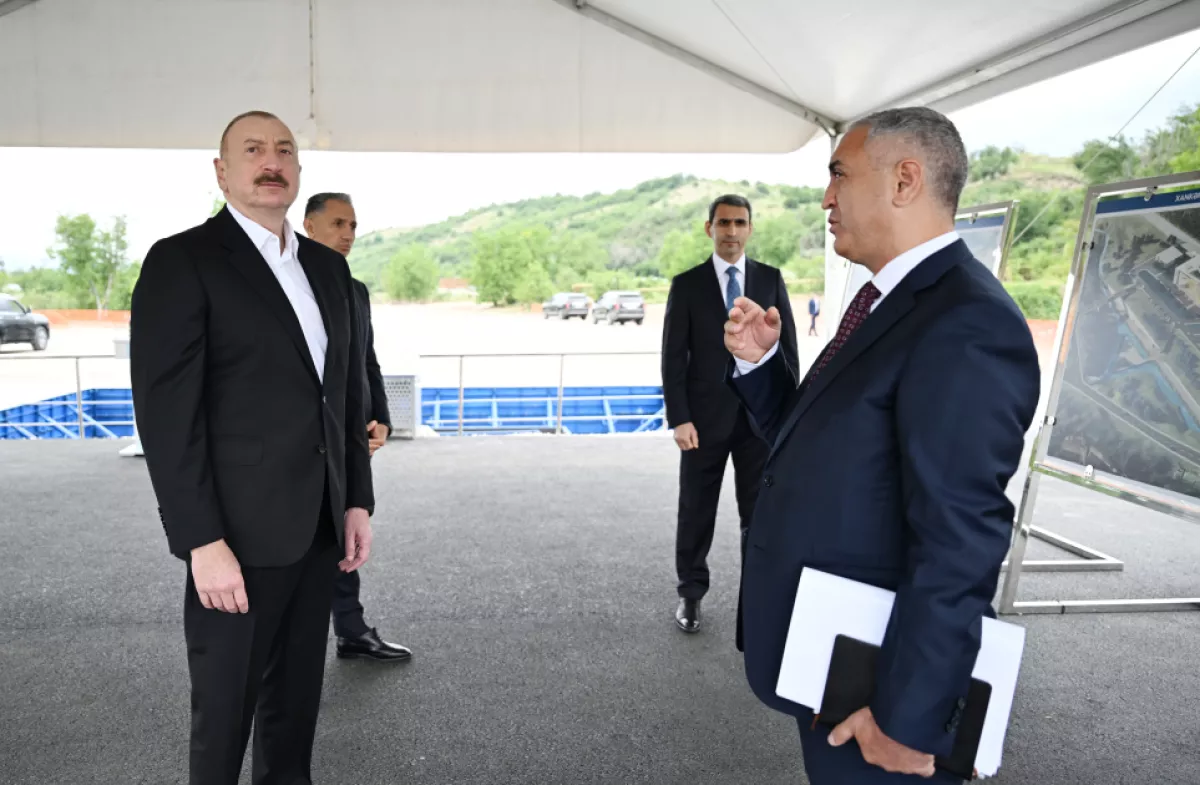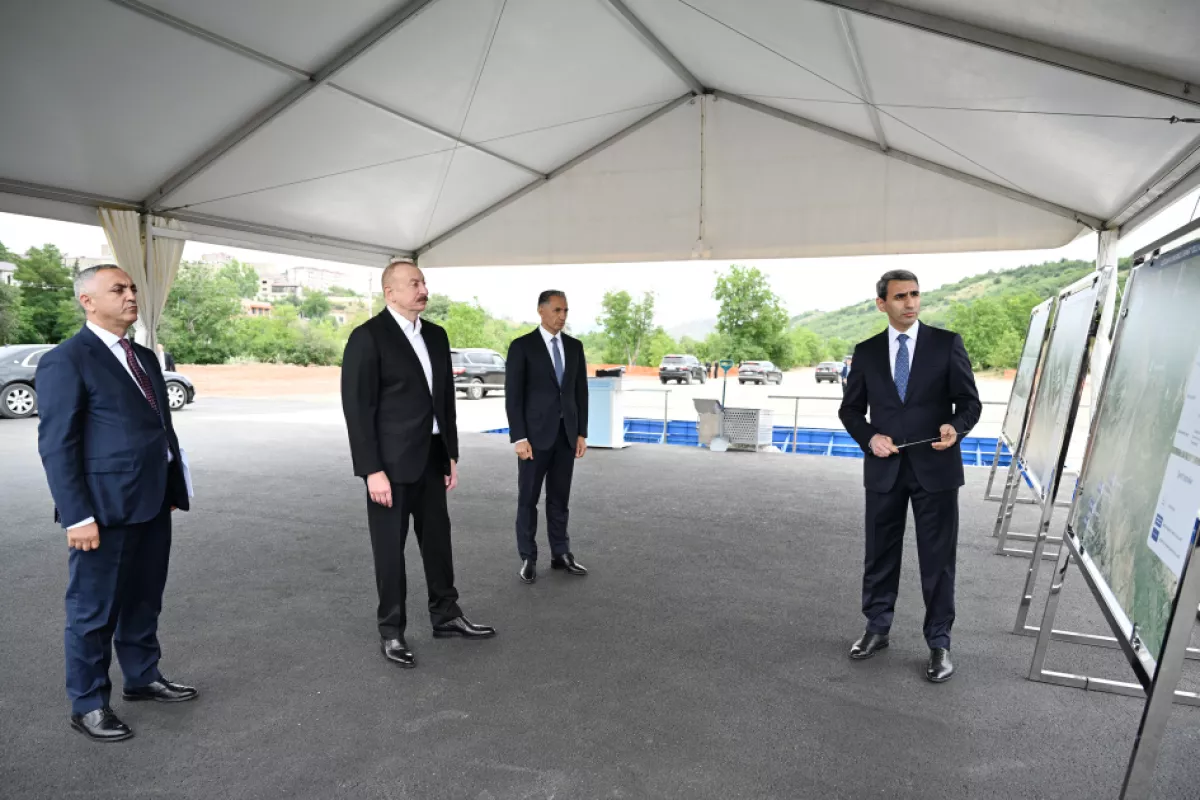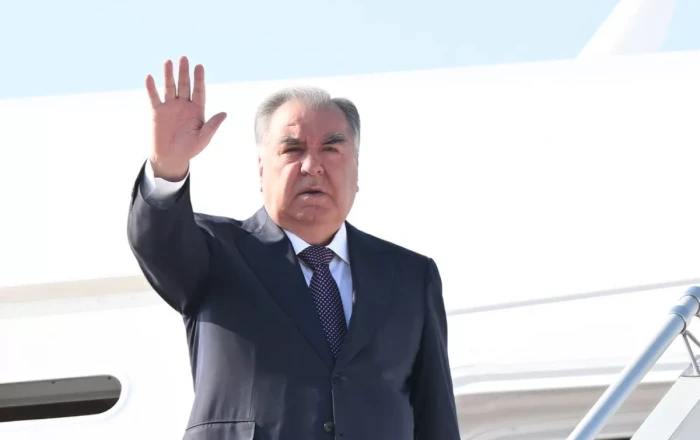Azerbaijani President Ilham Aliyev laid the foundation stone for the Khankandi Railway and Bus Terminal Complex on July 3.
Digital Development and Transport Minister, Chairman of Azerbaijan Railways CJSC Rashad Nabiyev briefed the head of state on the planned works and the “Aghdam-Khankandi railway” project, Caliber.Az reports via local media.
The new terminal is part of the broader Aghdam-Khankandi railway project—an extension of the existing Barda-Aghdam railway line.
The Aghdam-Khankandi railway will stretch 28 kilometers, or 34.7 kilometers including sidings, and feature four bridges, five overpasses, three pedestrian crossings, two drainage pipes, and other supporting infrastructure. Design work for the railway has already been completed.
Three stations are planned along the route: Asgaran, Khojaly, and the Khankandi Railway and Bus Terminal Complex. The development will also include various crossings and structures for vehicles, pedestrians, and agricultural use. Construction is scheduled for 2025–2026.
The Khankandi terminal complex, now under design, will span 6.4 hectares. The five-story facility will feature two railway platforms and 12 bus stops. It will also include a range of passenger services such as a waiting hall, ticket counters, shops, restaurants, a children’s entertainment center, a mother-and-child room, a medical point, administrative offices, meeting rooms, an open terrace, and recreational areas.
The railway section is expected to serve 800–1,000 passengers daily, while the bus terminal will accommodate 1,000–1,200 travelers per day.
Originally built in 1979 under the leadership of National Leader Heydar Aliyev, the Aghdam-Khankandi railway played a key role in the economic and cultural development of Karabakh. Its revival today aligns with Azerbaijan’s ongoing efforts to restore infrastructure and connectivity in the region following its reintegration.
Source: caliber.az















